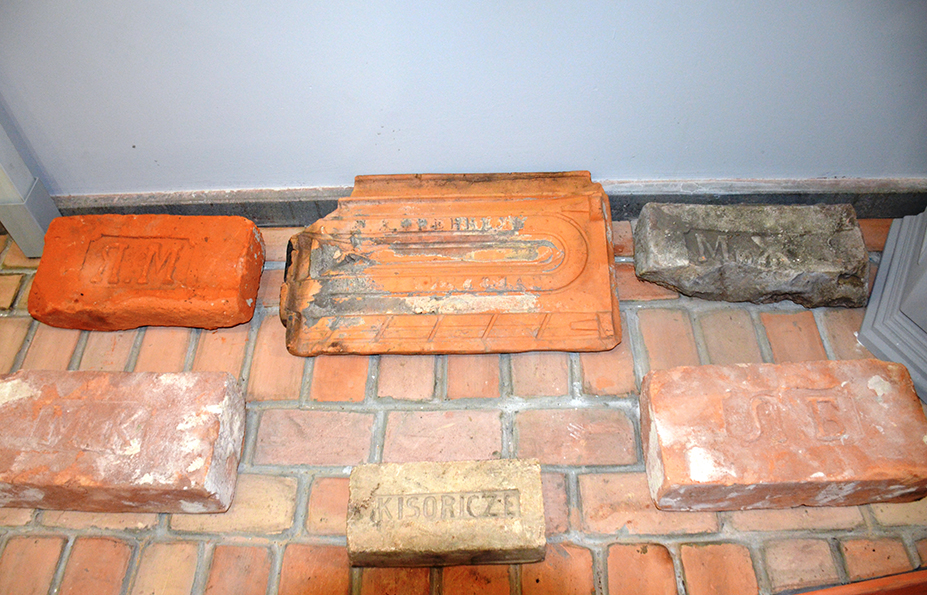Recently, the collection of Museum “Jewish Memory and Holocaust in Ukraine” was replenished with an interesting artifact: tiles made at the factory of S. A. Frenkel. The exhibit, donated by a former employee of our Museum, and currently the head of the exhibition, exposition and publishing department of the Museum of Resistance to the Holodomor, Mr. Valentin Rybalka, is already placed in the exhibition hall “Jews of Katerynoslav – Dnipropetrovsk – Dnipro”.
Tiles and bricks are a reminder of the rapid development of our city and active development, which caused an increase in brick and tile production in the then Katerynoslav province.
The first brick factories of Katerynoslav were founded back in 1790–1792 in Rybakova balka, which is now incorrectly called Rybalska. In the second half of the 19th century. the largest number of brick and tile factories was in Zhandarmska Balka (now Dovga Balka). Thus, in 1899, Sheftel Abramovich Frenkel founded a brick and tile factory in Balka. His products were plastic and were made by hand. Frenkel also sold bricks abroad. Sheftel Abramovych was also a well-known contractor in Katerynoslav, who won construction bids in the city. He built shopping malls, barracks, collectors, city sewers, a children's shelter, the first pawn shop in the city (the building is located at 27 Svyatoslav Khorobrogo St.). In 1913, Sheftel Frenkel became the head of one of the three largest synagogues in Katerynoslav - Oirach Tfila (Prayer Path), holding this position until 1917.
Frenkel owned a profitable house (now at 7 Starokozatska St.). Such houses were built to make a profit from renting out apartments. He was able to build it thanks to the income from his main brainchild – a brick and tile factory. The building was advantageously different from other income houses, because it had sewage, which was an unprecedented luxury for Katerynoslav at the time.
According to urban legend, after the start of the 1917 revolution, Frenkel and his family decided to go abroad. But he planned to return. Therefore, he hid some of the gold and jewels in a stash in a water pipe in his profitable house. It is unknown whether Sheftel Abramovich returned for them or not. The building was repeatedly searched, but nothing was found. Perhaps gold and jewels are hidden under the house or “woven” into the bricks from which the house is made. Rumor has it that before Frankel's departure, a new partition wall appeared in several apartments, which was supposed to separate the kitchen from the servant's room. However, no confirmation of this has been preserved…
Daria Yesina

